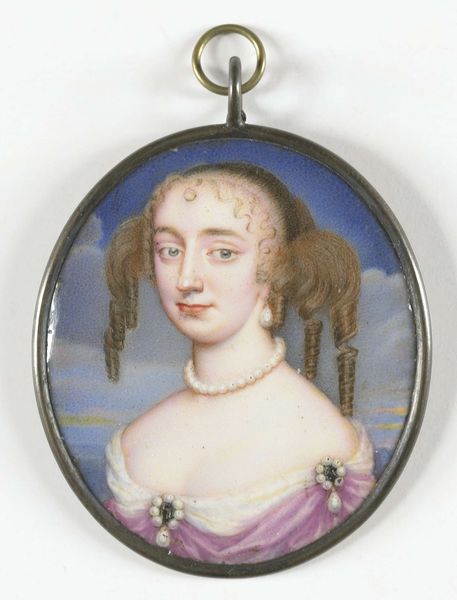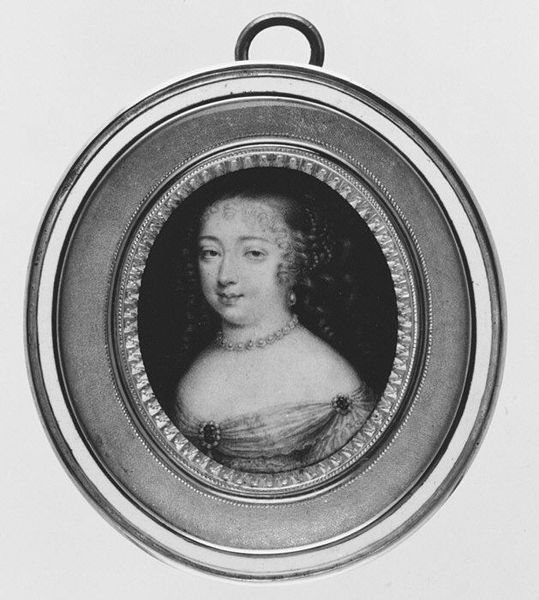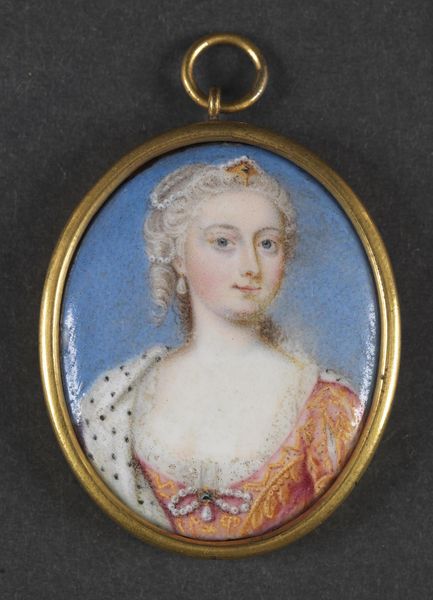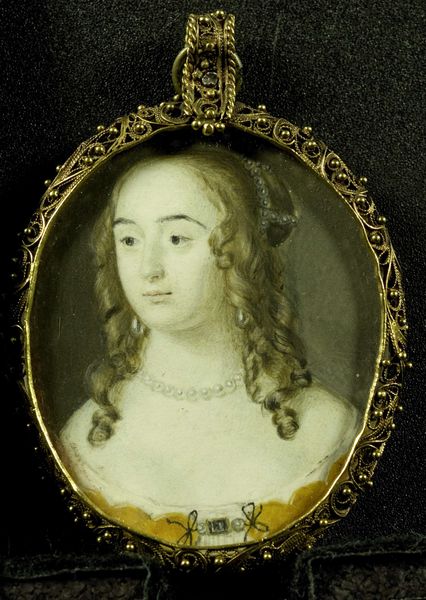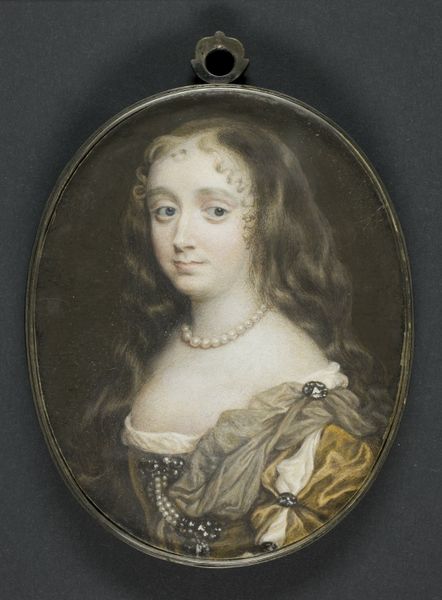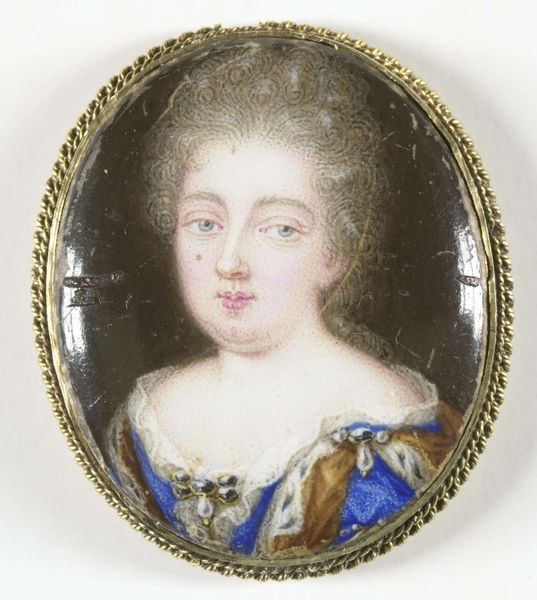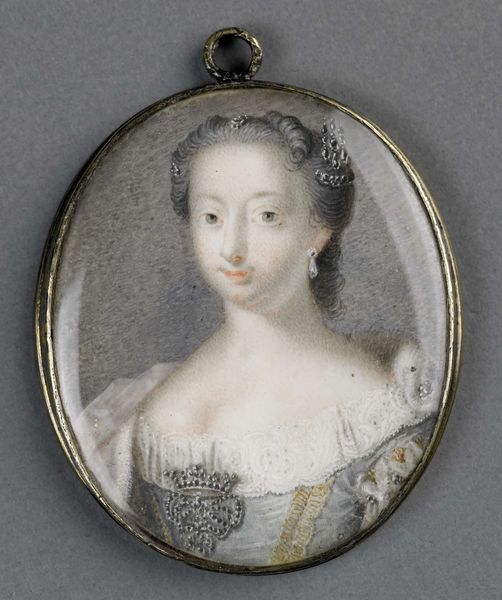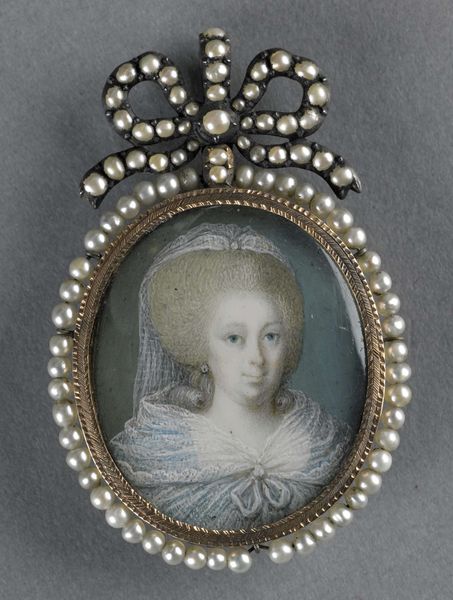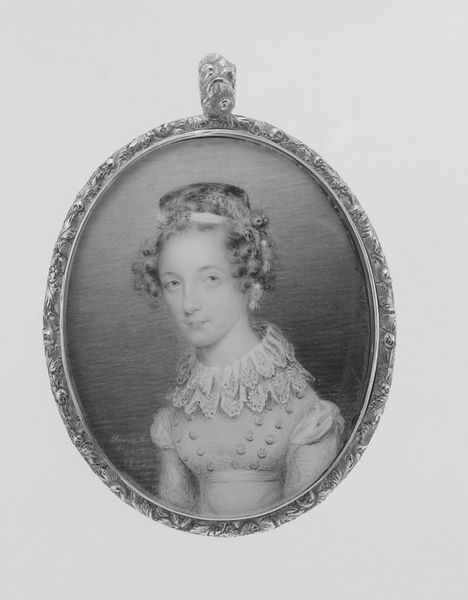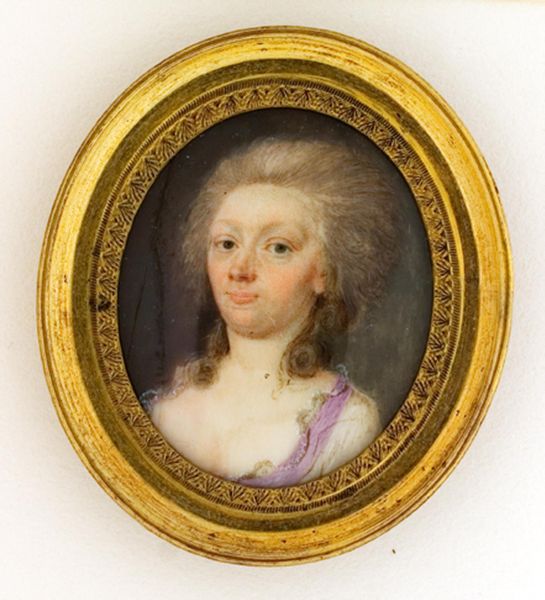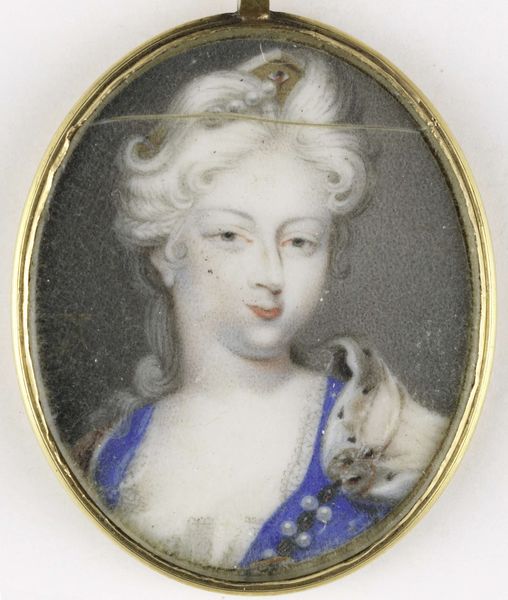
painting, oil-paint
#
portrait
#
baroque
#
painting
#
oil-paint
#
miniature
Copyright: Rijks Museum: Open Domain
Editor: Here we have a miniature oil painting, "Mary Stuart, Consort of William II," made by Jean Petitot sometime between 1645 and 1650. The detail is remarkable, almost dreamlike. What catches your eye in this piece? Curator: It's fascinating how Petitot captures Mary's essence within such a small frame. The pearl jewelry, the soft curls - these aren't just aesthetic choices; they're potent symbols of status, purity, and dynastic ambition. Do you notice how the frame itself enhances these meanings? Editor: Yes, it’s incredibly ornate, drawing attention to the central portrait. How would this object have functioned in its own time? Curator: These miniatures often served as intimate keepsakes. To wear an image so close to the body indicated profound devotion. Royal portraiture wasn’t merely about appearances; it transmitted powerful messages of legitimacy and enduring legacy. It's a pocket-sized declaration of power and love. Editor: So it’s a wearable emblem? Did the symbolism change over time? Curator: The core symbolism surrounding royalty—power, divine right, lineage—remained consistent, even if interpretations shifted subtly. Consider, too, how different cultures might perceive these emblems; pearls might represent tears in one culture and wealth in another. Context is paramount. Editor: That makes sense. I guess I was focusing too much on the individual portrayed, rather than the wider symbolic language. Curator: Indeed! It's a tiny portal into a world of cultural meanings, all radiating from the image of a single woman. I trust you find that quite extraordinary? Editor: Absolutely! It’s incredible how much can be packed into such a small artwork. Curator: Every element speaks volumes!
Comments
rijksmuseum about 2 years ago
⋮
In 1641 nine-year-old Princess Mary Henrietta Stuart married William II, Prince of Orange and later Stadtholder. This portrait medallion with black and white enamel is an example of mourning jewellery; it was made after Willem II died in 1650. On the inside of the medallion is a crowned violin and the inscription j’aime une seul (I love only one).
Join the conversation
Join millions of artists and users on Artera today and experience the ultimate creative platform.
